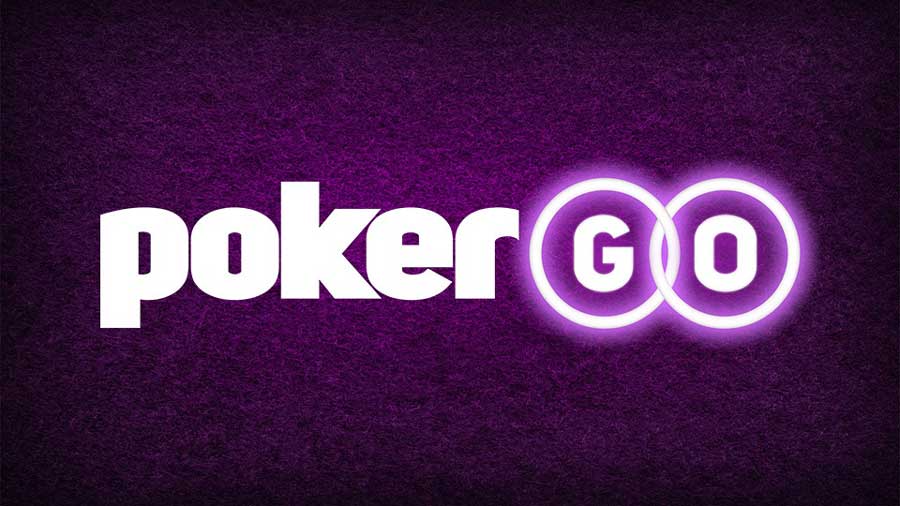OTT Has Been A-OK for PokerGO

About 120 days into its life as an OTT-focused subscription service, PokerGO said it is finding its niche attempting to “superserve” avid fans of the game.
PokerGO isn’t sharing subscriber data yet, but “we’re quite pleased with PokerGO’s subscription numbers and the session lengths,” JR McCabe, chief digital officer of Poker Central, the company behind the service, said, adding that numbers are ahead of expectations.
Poker Central pivoted its strategy to digital earlier this year, announcing in May the launch of PokerGO. That move followed the shutdown of a TV network late last year that had sought distribution with cable operators and other traditional multichannel video programming distributors, with limited success.
PokerGO subscriptions fetch $10 per month or $99 for an annual pass. The network is supported on iOS and Android mobile devices, connected-TV platforms (Apple TV, Android TV, Chromecast and Fire TV), and web browsers, with support for gaming consoles on deck.
Mobile Is Tops
Though live poker tournaments would seemingly drive a lean-back experience on TVs, most viewing of PokerGO, which also offers an array of original and licensed series, occurs on mobile (38%), compared to desktop (37%), tablets (13%) and connected TV platforms (12%).
McCabe said the shift to subscription VOD and OTT with PokerGO also has not detracted from its cable-network deals with NBC Sports Group and ESPN, as households viewing numbers during time periods with poker programming have increased.
The smarter way to stay on top of broadcasting and cable industry. Sign up below
“Our TV ratings have not only not been hurt, but the numbers are growing,” he said. “We’re seeing the pieces come together in a way that we had hoped.”
He added: “If you look at our service, it’s incremental. We are not looking to take away from the general-market viewership. We’re just looking to superserve a community and a tribe of poker fans who want more.”
Subscriptions are, of course, a key source of revenues for PokerGO, but it also makes money from network television ad sales (it co-sells with ESPN and NBC), and licensing original productions or selling of rights of certain events to distribution partners around the globe. Of recent note, PokerCentral struck a multiyear licensing deal with Doupal.TV to livestream and televise coverage of the World Series of Poker (WSOP) Main Event tournament to viewers in China. That deal runs through 2021.
Poker Central’s relationship with Caesars Interactive Entertainment and the WSOP aims to further distribution of the popular tournament around the world, and the market in China has a big appetite for poker and other forms of gaming, McCabe said.
“You’ll see us, over the next couple of weeks, announce some additional deals in territories worldwide,” he said.
PokerGO, which tends to skew male and draw millennial viewers, also has a sizable slate of originals and live events on tap, as McCabe expects the service to offer more than 100 “days” of live poker tournament action over the next year. It has been flanking that coverage with original productions that include Poker Nights, a semi-scripted comedy with Chris Parnell; Major Wager, a reality series in which poker players engage in prop bets; and Dead Money, a docuseries.
The goal is to have an original series premiere on PokerGO every eight weeks, McCabe said.
Eyeing New Widgets
PokerGO is also considering new, interactive elements that it can incorporate into the service. Examples being looked at include real-time and near-real-time data that follows things like player chip counts, standings, rankings and hand percentages.
Though Poker Central folded its original MVPD strategy, its OTT focus might eventually fit in with pay TV providers that are stitching online video into their set-top platforms. Comcast, for example, has already integrated Netflix and YouTube onto its X1 platform, and has likewise been expanding its slate of ad-free subscription services/channels such as FX+ and AMC Premiere.
McCabe said the door is open to new forms of MVPD deals that rely on OTT distribution technology.
“We are interested in having any conversations that would benefit the growth of the sport and our distribution,” he said. “But we want to be mindful that our priority is subscription. We believe in that model and we think that niche audiences are the future of media.”
